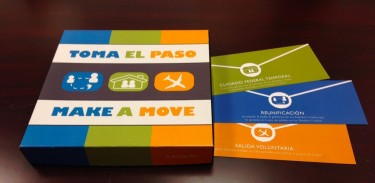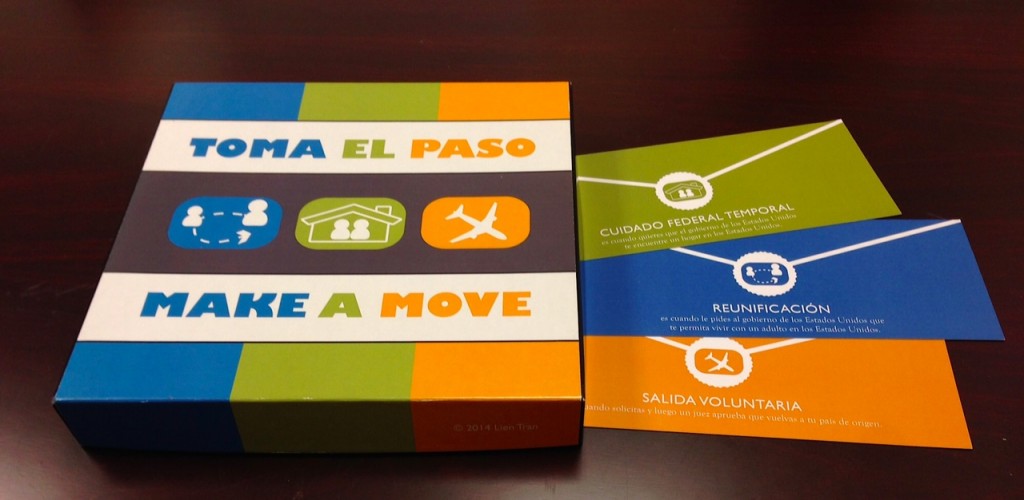
Lien Tran, a professor of interactive media in the School of Communication, created a board game to help young, unaccompanied immigrants navigate their arrival to shelters in the United States.
The board game “Toma El Paso”, or “Make a Move,” has been used in shelters like His House Children’s Home in Miami Gardens as an interactive way to educate youth on their legal rights and the options available to them to leave the shelter.
“For the youth, I want them to feel empowered at least by the knowledge of understanding this new and strange shelter release process,” Tran said.
The board game, available in both English and Spanish, depicts a shelter and is set up as one. To play, players roll the dice to then have the option to move in any direction. They first meet with the case manager, the facilitator of the game, and then decide on one of three routes to take to move through the game. Along the way, they reach a lawyer and different cards with information.
The goal of the game is to leave the shelter first.
“It’s intentionally kind of ambiguous and complicated because it’s intended to simulate the actual experience of living in a shelter,” said Lauren Gutman, a project coordinator for the Immigrant Children Affirmative Network (ICAN).
Gutman has played the game with youth during monthly shelter visits she takes with ICAN, a program through the School of Education that is part of a partnership working to help unaccompanied immigrant minors in Miami. It holds workshops during immigrant shelter visits after which the youth get to play the game.
“Our end goal is that they’ll learn a little bit more about the system,” Gutman said. “That means learning more about their legal options, about their rights and their goals, to help them orient themselves towards a path.”
Real-life shelters like His House provide a home and care to unaccompanied children from around the world.
Young immigrants stay in such shelters while they seek approval to leave the shelter through an exit option. The court rulings take approximately two to three weeks. According to its website, the His House International program has housed and served more than 3,000 children from Central America and other parts of the world as part of its program.
According to Gutman, youth in the shelters generally have three options. They can choose to go home through voluntary deportation; they can choose foster care if they wish to stay in the country but don’t have a family member in the U.S.; or they can choose re-unification if they have a family member in the U.S. that they can live with.
When they first arrive at the shelter, the immigrants tend to get overwhelmed with the rights and information they have, Gutman said. That’s why she believes the board game helps them absorb all the information in an interactive way.
“What’s nice about the game is that it allows them to engage with the information that they may or may not have been exposed to, and learn it in a way that is a little bit more relevant for them,” she said.
Tran hopes the game will serve as a training tool to the shelter staff and as an awareness tool to the community on what the process is like for the young, undocumented, unaccompanied immigrants. For the children, her goal is that it will not only be helpful, but also serve as a conversation starter.
“‘Toma el Paso’ isn’t your typical ‘let’s play for fun’ children’s game,” she said. “Making an informative game that people want to play again is super satisfying. And it’s a conversation starter – by playing the game they are more willing to discuss their status or thoughts on the shelter release process.”






